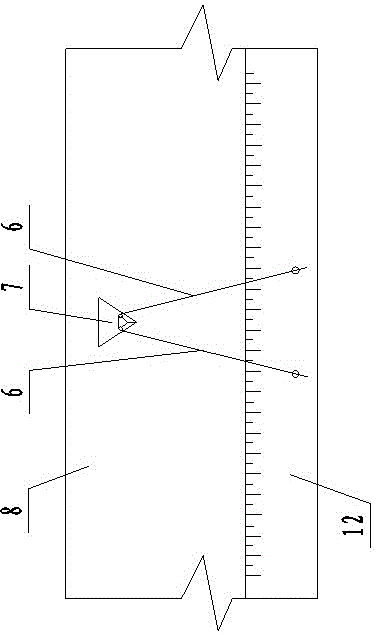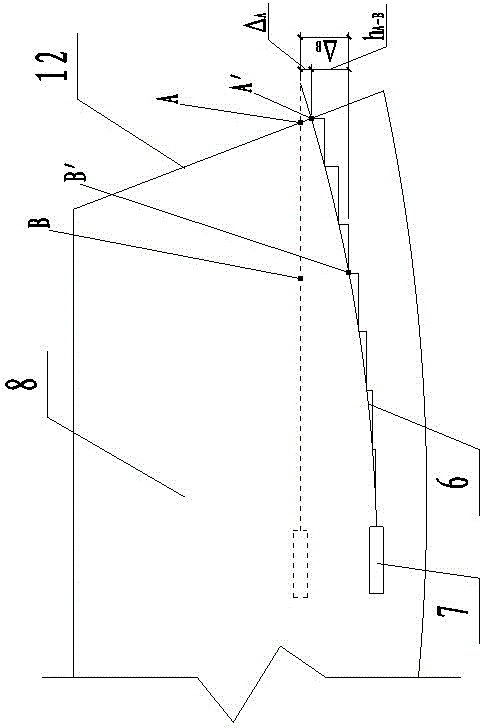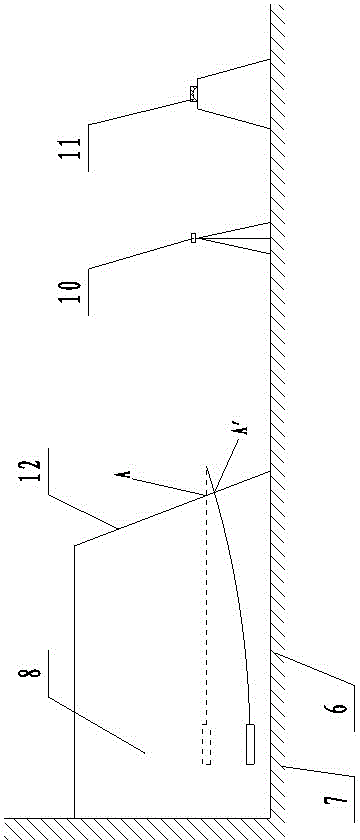Method for measuring settlement deformation by utilizing inclinometer and angle-adjustable converter
A technology of inclinometer and converter, which is applied in the direction of height/horizontal measurement, instruments, measuring devices, etc. It can solve the problems of incomplete representation of settlement value, inconvenient construction, and limitation of measurement methods, so as to achieve wide application range and ensure accurate measurement performance, low cost of measurement
- Summary
- Abstract
- Description
- Claims
- Application Information
AI Technical Summary
Problems solved by technology
Method used
Image
Examples
Embodiment Construction
[0037] The present invention uses an inclinometer to measure settlement deformation through an angle-adjustable converter. The inclinometer 9 installed on the measuring rope 4 moves in the settlement tube 6 through the angle-adjustable converter 7 to measure the high filling of the single air surface. Settlement deformation of square foundation 8;
[0038] like Figure 4 As shown, the structure of the angle adjustable converter 7 is as follows: including a triangular prism frame 1, a multi-angle adjustable pulley block 2, a joint pipe 3 and a cover plate, the multi-angle adjustable pulley block 2 is installed inside the triangular prism frame 1, and the triangular prism A side edge of the frame 1 is provided with a guide adjustment groove column 5, and the bottom of the multi-angle adjustable pulley block 2 is set in the guide adjustment groove column 5, and the guide adjustment groove column 5 is provided with a plurality of adjustment holes and is connected with the position...
PUM
 Login to View More
Login to View More Abstract
Description
Claims
Application Information
 Login to View More
Login to View More - R&D
- Intellectual Property
- Life Sciences
- Materials
- Tech Scout
- Unparalleled Data Quality
- Higher Quality Content
- 60% Fewer Hallucinations
Browse by: Latest US Patents, China's latest patents, Technical Efficacy Thesaurus, Application Domain, Technology Topic, Popular Technical Reports.
© 2025 PatSnap. All rights reserved.Legal|Privacy policy|Modern Slavery Act Transparency Statement|Sitemap|About US| Contact US: help@patsnap.com



